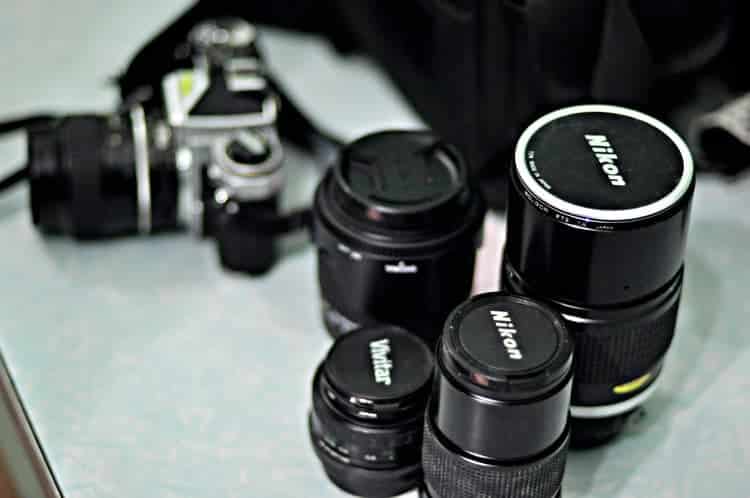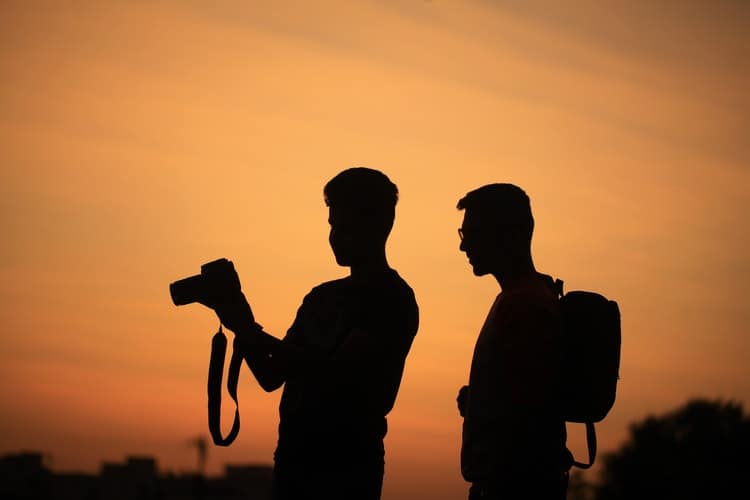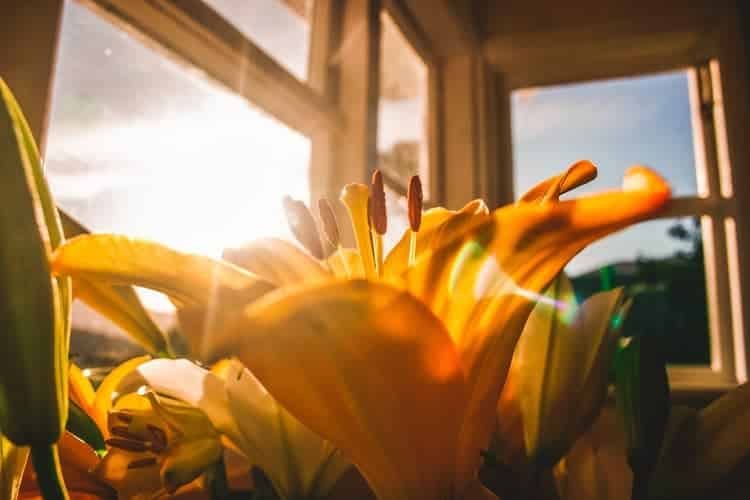Lighting is one of the most important aspects of a good photo. Picture this: you’re taking a photo of a picturesque landscape during the middle of a bright day. Unfortunately, the shot isn’t delivering because the sun’s rays occupy a considerable part of the shot; it’s difficult to see anything due to oversaturation and reduced contrast. This is called sun flare in photography.
Sun lens flare isn’t always a bad thing, though. In some cases, light flare (which results from more light sources than just the sun) is an artistic choice that can add an almost divine quality to your photos, or a dreamlike one in the case of nighttime neon lights. However, if you’re looking to eliminate it from your shot, there are concrete steps you can take to prevent it from overpowering your photo.
In this article, we’ll show you how to create lens flare for aesthetic purposes, as well as how to avoid lens flare if you don’t want it to take over your images. Read on to learn more.
What is lens flare?
Lens flare occurs when bright light strikes the camera lens and hits the sensor, leaving streaks of light in the form of a ring, rays, or starbursts. It can either blur an image, making it difficult to see the subject, or enhance it overall.
If you’re still not entirely sure what lens flare in photography looks like, check out some examples of lens flare. Familiarizing yourself with the effect will help you decide whether or not light flare is a good addition to your photo.
Some (but not all) of the factors that contribute to lens flare are:
- Aperture – the opening in a lens where light passes through
- Focal length – the distance between the camera’s sensor and optical center that tells you the potential angle and magnification of your photo
- Lens design – how the lens is structured and its general type
- Dust – residue or grime that may dirty your lens
How to create lens flare
Capturing lens flare effectively isn’t as tricky as you may think, but you need to adhere to some guidelines to create the right effect in your shot.
Face the light source
It may seem rather obvious, but you need to shoot directly into the light source to create a light flare effect in your picture. For instance, the sun is the most popular source of lens flare in photography. When shot head-on, the sun will produce a sun lens flare, with light rays dissipating across the field of view.
Since the sun is very bright and can damage the naked eye, only look at the sun through your camera lens. Then, when the lens flare filters through the camera, it’ll be less overwhelming to your vision.
Pick the proper lens, equipment, and settings

Not every lens is optimized for shooting light flare. Of the options available, a zoom lens is the best for a lens flare shot because you’re working with a broader surface for light to bounce off. In addition, lots of newer camera equipment has an anti-reflective coating and features that filter out lens flares.
Additionally, remove the lens hood, which acts as a shield for your camera lens, since these are made to prevent lens flare. Be sure not to use these forms of equipment, or it’ll be counter-productive as you try to create a lens flare shot.
You may also want to adjust the aperture settings to the smallest possible option. This will let in minimal light, and you can gradually increase the aperture to see how it affects the shot and intensity of the lens flare.
Experiment at different times
When discussing the light flare effect, people talk a lot about the sun, but you can do night shoots to incorporate lens flare into your shots. In addition, artificial light such as car headlights, illuminated signs, and neon can create a striking hazy effect.
If you rely on lens sun flare, prioritize shooting at ‘golden hour’. Golden hour is the transition time between day and night during sunrise or sunset. At these times, the sun will create a vibrant glow and can be at the perfect angle to directly hit your lens.
How to avoid lens flare
Now that we’ve examined how to create the lens flare effect in a shot, let’s look at ways to avoid lens flare in an image. If you don’t like the look of lens flare or think it’s overpowering your images, try these three steps.
Use the right lens and equipment
Remember how we said a zoom lens was perfect for creating a light flare in a shot? You can infer that a prime lens is the best option for avoiding light flare. They’re less susceptible to lens flare since they cut down the amount of light let into the camera.
A lens hood will block light flare and help avoid scattering light in your shot, so you should be sure to use one when shooting. Lastly, it’s essential to keep your lens clean because smudges will lead to a lens sun flare in your shot.
Block light source and adjust the camera angle
Shoot with the sun behind you so that it illuminates the scene from behind the camera. If you face the sun or another light source, you need to fully or partially block it by repositioning yourself to situate the light behind an object. If the light is just outside the frame, you can use your hand or another item to cover it.
Shoot at strategic times

We mentioned golden hour for creating lens flare, but it can also be an opportune time to avoid lens flare. Since the sunlight is less intense and not blaring down as much, lens sun flare won’t overpower the photo. It even creates a soft glow that will bathe your image in warmth or coolness, depending on the time of day.
However, since the sun is moving and the light is changing rapidly at golden hour, you may often have to adjust your camera settings and position. Shooting at golden hour can also help you achieve a beautiful silhouette effect in your shot.
Turn to technology
The photoshop lens flares method works both ways. You can pretty easily add or remove lens flare in an image depending on the desired effect. You can photoshop lens flares out of a picture by using the clone stamp tool (cover the light flare with what lies behind it). To add lens flare, you can find plenty of transparent lens flare images online, and overlay them with your image.
Conclusion
Now that you’ve gained a greater familiarity with what lens flare is, it’s up to you to decide if it works for or against you as a photographer. Lens flare can give your photos a unique and almost ethereal feel, but it can also overpower your shot. Either way, you now know how you can achieve or avoid it. You need to be strategic about your equipment, angles, and direction, no matter which route you go.
Invest in the appropriate lens and any other equipment to make things easier. If you find it challenging to shoot a light flare, it’s possible to add or reduce lens flare with photoshop, but it’ll take some familiarity and practice when it comes to using the program. Finally, compile your best photos using lens flare and put them over stock audio tracks to create a fantastic slideshow.
